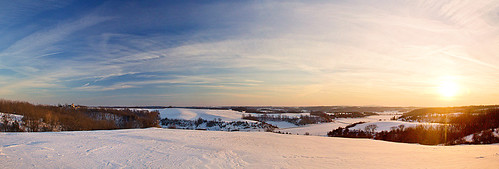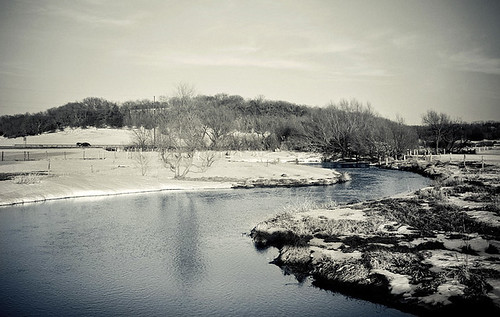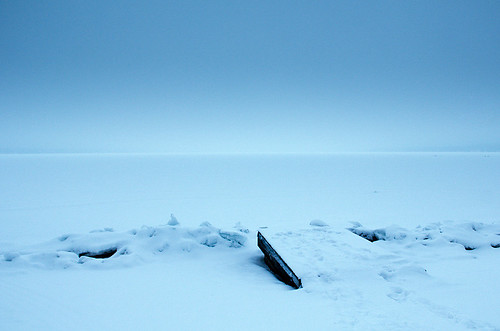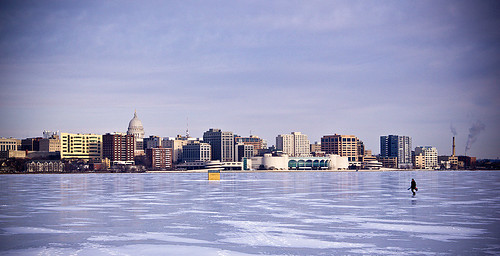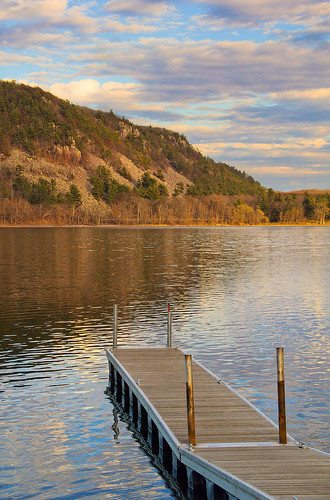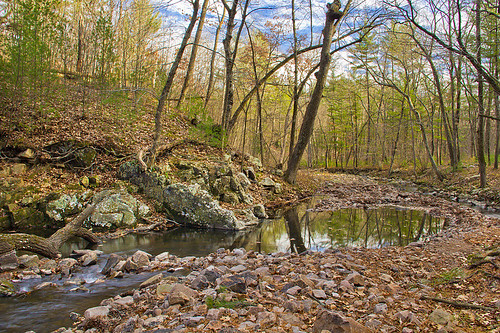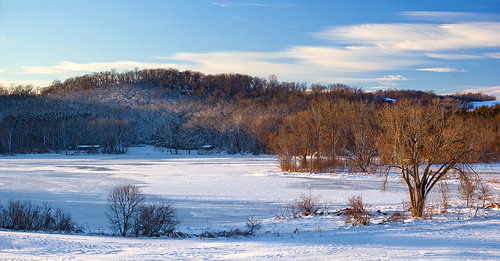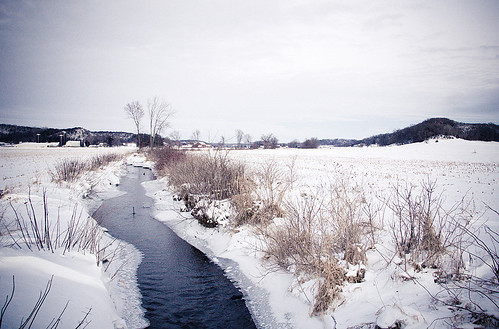The snow covered, undulating terrain of Southern Wisconsin - carved by many millenia of erosion from what was once flat ocean bottom, many millions of years ago.
Flowing within an agricultural valley, the Black Earth Creek Fishery Area is considered a Class 1 trout stream, and is constantly managed for stream restoration, trout habitat, and public access.
